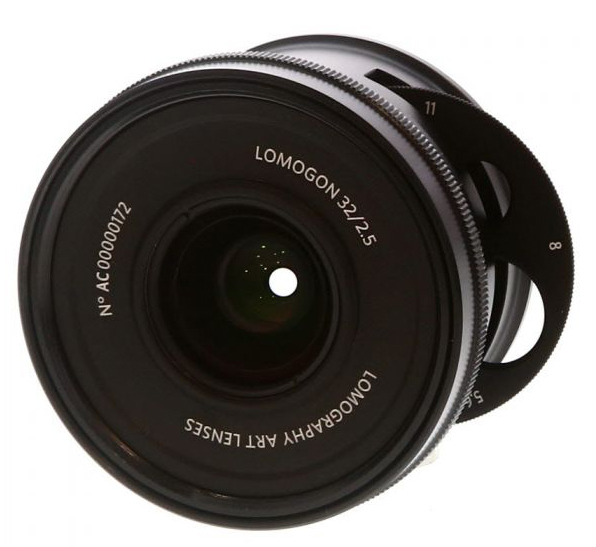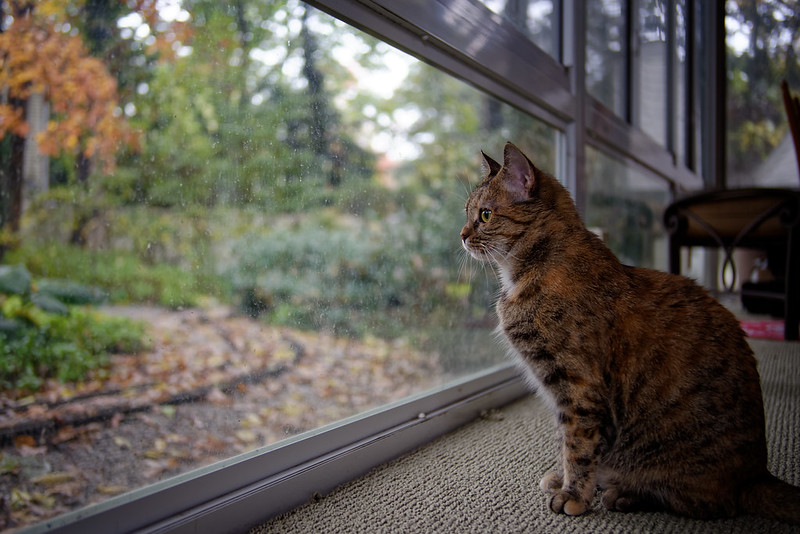Lomogon 32mm f/2.5

Introduction
Advertised as sort of a vacation or street photography lens, this niche Lomography prime lens hits home with top-of-the-line contrast, quality sharpness, and some quirky ergonomics.
Intended to replicate the view of a Lomography LC-A 35mm camera the goal from the lens makers seems to be a retro look to the images, but the results seem to be more high-end than the Lomo name would imply.
Specifications
The lens is built with "some" multi-coated elements there are six elements in six groups.
Maximum Aperture: f/2.5
Minimum Aperture: f/11
There is pleasant bokeh with mostly smooth blur and always rounded points of light due to the always-round-hole design of the aperture dial.
The lens is strictly manual focus and though modern, it lacks any sort of "chip" to communicate with the camera about its focal length. The 32mm length is not a setting available in my Nikon bodies so I pick something close and edit the EXIF data later in post production.
Construction
The lens feels all metal on the outside and given its weight and price I doubt they skimped and used any plastic anywhere... except for that odd aperture dial that sticks out of the side through a slit in the lens. This aperture ring is ergonomically a pain and since it leaves a permanent slit in the lens it means you are at greater risk to get some dust into the lens.
The aperture dial itself has a slight click when you are at the proper alignment for a round aperture hole, but it is easily bumped since it protrudes so much and getting it set sort of between proper apertures is very possible and very annoying.
Performance
Once you fight your way past the odd aperture dial and learn to not bump it when you reach for the focus ring, the reward is outstanding contrast, good sharpness, and clean color rendition.
Though not a macro by any means, it can focus down to roughly 18-inches. This is crucial for me with a wider-angle lens such as this prime. I like to get in close with a subject using a wide lens and still be able to capture the environment around them.
Though weird, the aperture wheel does let the user easily flip from f/2.5 (perhaps my favorite aperture) to f/11 in one click.
The lens cap is a slip-over style that is all metal. At first this feels high-end and professional, but I had some problems right away getting it to slip over the front of the lens cleanly and go down straight. I found it often ending up at a slight angle. There is no big, raised lip for fliters to switching to a regular pinch-style lens cap seems impossible. I will just have to take greater care when I put the lens cap on and I have to make sure not to dent it as that will not only look bad but can impact how well it mates to the lens.
Alternatives
The 32mm focal length is unusual for a prime, if not unique for lenses produced in the last few years so you are left with picking something adjacent. Since we are looking at wider angles here I would prefer to pick something wider but really a good comparison is perhaps the 35mm prime lens range where we can find all sorts of fast glass (f/1.4 through f/2 being affordable and easily available along with things like an aperture ring that connects to the camera body's sensor or a CPU chip to communicate the focal length and f-stop information directly to the camera.
Such examples in the 35mm range are: Sigma Art 35mm f/1.4 DG HSM and Zeiss 35mm f/2 Milvus ZF.2 on the high end of cost/performance and Nikkor-O 35mm f/2 on the cheaper side.
Examples
Following are some sample photos to demonstrate the power of this type of lens and some general uses which will likely yield good results. If you shoot things like these, then this lens may be a good one to think about adding to your camera bag.


Check out more photos I have shot with this lens in my Flickr Album.